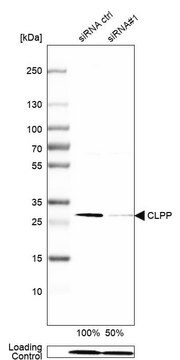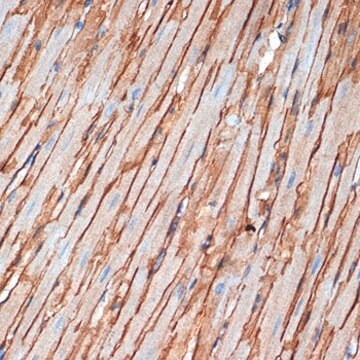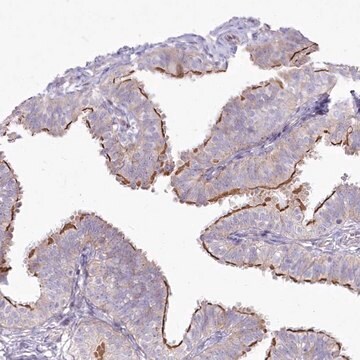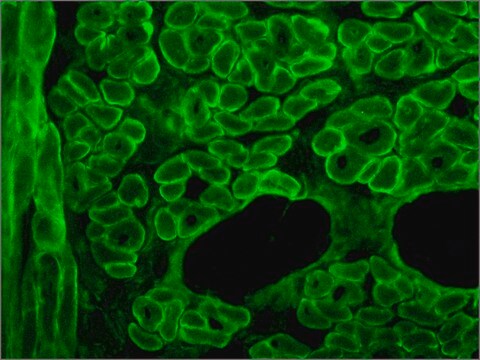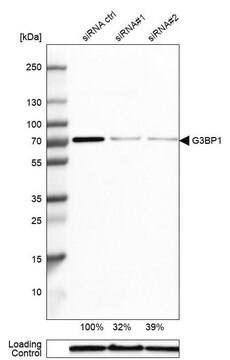MAB1645
Anti-Dystrophin Antibody, clone 1808
clone 1808, Chemicon®, from mouse
Sinónimos:
Anti-BMD, Anti-CMD3B, Anti-DXS142, Anti-DXS164, Anti-DXS206, Anti-DXS230, Anti-DXS239, Anti-DXS268, Anti-DXS269, Anti-DXS270, Anti-DXS272, Anti-MRX85
About This Item
Productos recomendados
origen biológico
mouse
Nivel de calidad
forma del anticuerpo
purified antibody
tipo de anticuerpo
primary antibodies
clon
1808, monoclonal
reactividad de especies
chicken, mouse, rat, human
fabricante / nombre comercial
Chemicon®
técnicas
immunohistochemistry: suitable
western blot: suitable
isotipo
IgG1
Nº de acceso NCBI
Nº de acceso UniProt
Condiciones de envío
dry ice
modificación del objetivo postraduccional
unmodified
Información sobre el gen
human ... DMD(1756)
Especificidad
STAINING PATTERN:
On cryostat sections of normal mouse diaphragm MAB1645 gives strong immunofluorescence staining of the entire sarcolemma, with particularly strong staining of neuromuscular junctions.
SPECIES REACTIVITY:
Labels skeletal muscle from rat, chicken and Xenopus laevis. Labels cardiac muscle from rat and normal, but not mdx, mouse. Also labels smooth muscle from chicken gizzard.
Inmunógeno
Aplicación
Immunohistochemistry
Optimal working dilutions must be determined by the end user.
Forma física
Almacenamiento y estabilidad
Información legal
¿No encuentra el producto adecuado?
Pruebe nuestro Herramienta de selección de productos.
Opcional
Código de clase de almacenamiento
10 - Combustible liquids
Clase de riesgo para el agua (WGK)
WGK 2
Punto de inflamabilidad (°F)
Not applicable
Punto de inflamabilidad (°C)
Not applicable
Certificados de análisis (COA)
Busque Certificados de análisis (COA) introduciendo el número de lote del producto. Los números de lote se encuentran en la etiqueta del producto después de las palabras «Lot» o «Batch»
¿Ya tiene este producto?
Encuentre la documentación para los productos que ha comprado recientemente en la Biblioteca de documentos.
Nuestro equipo de científicos tiene experiencia en todas las áreas de investigación: Ciencias de la vida, Ciencia de los materiales, Síntesis química, Cromatografía, Analítica y muchas otras.
Póngase en contacto con el Servicio técnico